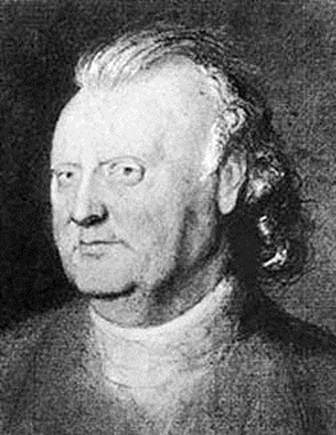
John Landen
 المؤلف:
T A A Broadbent
المؤلف:
T A A Broadbent
 المصدر:
Biography in Dictionary of Scientific Biography
المصدر:
Biography in Dictionary of Scientific Biography
 الجزء والصفحة:
...
الجزء والصفحة:
...
 27-3-2016
27-3-2016
 2496
2496
Born: 23 January 1719 in Peakirk (near Peterborough), England
Died: 15 January 1790 in Milton (near Peterborough), England

John Landen's mother was Elizabeth Cole and his father was Matthew Landen. John trained to become a surveyor and practised that occupation in Peterborough from 1740 to 1762. After 22 years as a surveyor he took up a position as land agent to Earl Fitzwilliam on his estate at Milton, near Peterborough. He was elected a Fellow of the Royal Society on 16 January 1766. He continued to work for William Fitzwilliam until 1788 when he had to give up since by this time he was suffering the effects of a painful illness. He had married Elizabeth and they had two daughters. His wife's death occurred shortly after he gave up his position as land agent and only a short time before his own death.
Landen was never a professional mathematician and his interest in mathematics was for him a leisure activity. He began contributing to the mathematical problem section of the Ladies diary from 1744 soon after he began working as a surveyor. In 1754 he published the first of his eight articles in the Philosophical Transactions of the Royal Society and in the following year he published Mathematical Lucubrations. He sent his results on making the differential calculus into a purely algebraic theory to the Royal Society. Lacroix discussed this work in Traité Du calcul différentiel where he stated that Landen was the first to present calculus in a purely algebraic setting. Landen's work appeared as A Short Discourse Concerning the Residual Analysis published in 1758 and, in a more complete form, in Residual analysis which was published in 1764. His ideas on this topic were later taken up by Lagrange although he describes Landen'scontribution as an unsophisticated early attempt.
Landen investigated the dilogarithm in 1760, about the same time as Euler, and introduced the trilogarithm. The trilogarithm was studied further by Spence around 1809 and Kummer around 1840. Landen wrote on dynamics, summation of series and an important transformation giving a relation between elliptic functions. This last result, known by his name, expressed a hyperbolic arc in terms of two elliptic ones. It was published in the Philosophical Transactions of the Royal Society in 1775. The paper [7] describes this result in detail. Moll writes in the introduction to [7]:-
The problem of rectification of conics was a central question of analysis in the 18th century. [We] describe Landen's work on rectifying the arc of a hyperbola in terms of an ellipse and a circle. Naturally, Landen's language is that of his time, in terms of fluents and fluxions, and his arguments are not rigorous in the modern sense. The main result ... is a special relation between the length of an ellipse, the length of a hyperbolic segment, and the length of a circle. The proof is based on a generalization of Euler's formula for the lemniscatic curve ...
Applications of this result appeared in Landen's Mathematical memoirs of 1780. He also solved the problem of the spinning top and explained Newton's error in calculating its precession. He put these results into a second volume of Mathematical memoirs which was published only days before his death. He also corrected Stewart's result on the distance of the Sun from the Earth in 1771.
In [4] his achievements are summed up as follows (a similar passage occurs in [2]):-
Though foreigners gave him a high rank among English analysts, he failed to develop and combine his discoveries. He led a retired life, chiefly at Walton in Northamptonshire. Though humane and honourable, he was too dogmatic in society.
- T A A Broadbent, Biography in Dictionary of Scientific Biography (New York 1970-1990).
http://www.encyclopedia.com/doc/1G2-2830902448.html
- Biography by A M Clerke, rev. Marco Panza, in Dictionary of National Biography (Oxford, 2004).
Articles:
- G Almkvist, Gauss, Landen, Ramanujan, the arithmetic-geometric mean, ellipses, π and the Ladies Diary, Amer. Math. Monthly 95 (1988), 585-608.
- A M Clerke, John Landen, Dictionary of National Biography XXXII (London, 1892), 48-49.
- C Hutton, John Landen, A Mathematical and Philosophical Dictionary II (London, 1795), 7-9.
- H G Green and H J J Winter, John Landen, F R S (1719-1790) - mathematician, Isis 35 (1944), 6-10.
- V Moll, J Nowalsky and L Solanilla, The story of Landen, the hyperbola and the ellipse, Elem. Math. 57 (1) (2002), 19-25.
- G N Watson, The Marquis and the Land-Agent, Mathematical Gazette 17 (1933).
 الاكثر قراءة في 1700to1749
الاكثر قراءة في 1700to1749
 اخر الاخبار
اخر الاخبار
اخبار العتبة العباسية المقدسة


